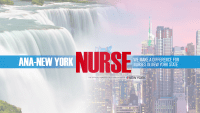To mark American Heart Month, our February issue features several articles on heart disease, with an emphasis on raising women’s awareness of their risk. Cardiovascular disease is the #1 killer of women in the United States, causing about one in every three deaths.
Our cover story, “A woman’s worst enemy,” shatters the myth that heart disease is a threat primarily to men and spotlights the considerable lack of awareness about women’s risks even among healthcare providers. It also pinpoints important differences in symptoms, diagnostic methods, treatment, and outcomes for men and women with heart disease. Another article, “Knowing ‘your numbers’ counts” describes the deadly risks of hypertension and tells what U.S. nurses are doing about it. “Saving lives with continuous ST-segment monitoring” delineates the benefits of this monitoring technique in detecting the silent ischemia that may accompany a myocardial infarction. Finally, “How to start your personal exercise program” provides advice on launching a fitness program to help you reduce your heart disease risk.
What scare me the most about heart disease are the devastating effects, such as disability and a significantly decreased quality of life. Heart disease can rob us of our golden years. If you’re between ages 40 and 60, know that you’re at higher risk for heart disease. But know, too, that you can take action to promote heart health by reducing your risk factors—for instance, stopping smoking, controlling high cholesterol or high blood pressure, losing weight, and becoming more active. It’s never too late for women and men of all ages to make the lifestyle changes needed to decrease cardiovascular risk.
Many organizations sponsor campaigns to support public education about cardiovascular diseases. Several years ago, the National Heart, Lung, and Blood Institute introduced the red dress as a national symbol for its “The Heart Truth” program. This campaign seeks to send women a wake-up call about the risks of heart disease and to help them make the connection between their personal risk factors and their personal risk of developing heart disease.
As you may be aware, February 2 was National “Wear Red” Day—an opportunity for everyone to wear something red (a dress, shirt, or tie, or the “red dress” pin) as a way to unite with and inspire others to care about promoting women’s heart health. Even if you didn’t wear red that day, it’s important every day to embrace the role all nurses can play in helping ourselves, family members, friends, patients, colleagues, and everyone else we care about to wake up to the danger of heart disease.
For many nurses, health promotion and disease prevention are key components of professional practice. To cite a few examples, we help families make sure their children get immunized and use car seats correctly. We teach patients how to prevent sexually transmitted diseases and reduce the spread of AIDS. We try to prevent serious injuries by encouraging bike riders to wear helmets and urging everyone to wear seat belts while riding in motor vehicles. We examine patients for skin cancer and educate them in risk reduction. We teach patients how to perform breast self-examinations and we recommend Pap smears and mammograms. We urge at-risk patients to receive the pneumonia, influenza, and meningococcal vaccines. We assess elderly patients’ need for assistive devices and teach them and their families how to make the home safer and reduce their risk for falls. For these and so many other aspects of health and wellness promotion, nurses serve as the link to credible information and advice.
Obviously, we’re naturals at promoting others’ health. But are we heeding our own advice and taking good care of ourselves? Sometimes that’s harder to accomplish than teaching others. But after reading “A woman’s worst enemy,” I’m certain you’ll realize (if you didn’t already) why awareness of women’s heart disease risk is so crucial.
For the rest of American Heart Month, please help promote heart disease awareness by wearing your “red dress” pin. Let it remind you of the need to focus attention on a VIP—yourself.
Pamela F. Cipriano, PhD, RN, FAAN
Editor-in-Chief


















